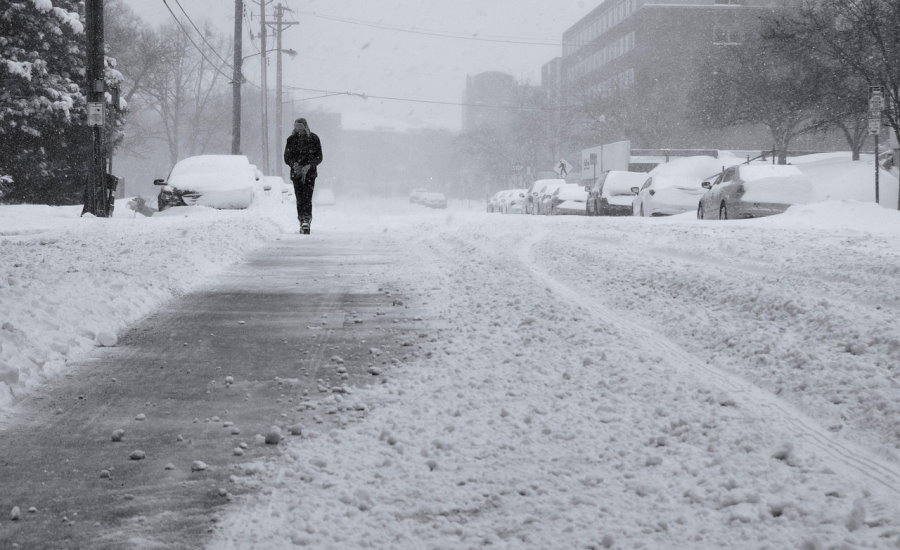Roofing Contractors Around the U.S. Battle Snow Storms, Frigid Temperatures

Image by Noah Newbauer from Pixabay.
Prolonged freezing temperatures and snow storms are causing chaos for millions of Americans, including roofing contractors like Derek Lindsey, CEO of Infinity Roofing & Siding in Houston.
“We have endured hurricanes and thousand-year floods and gotten to and from our office via boat, but we have never been shut down for — going on three full days, probably going to be at least four full days — like we are now, nothing ever in 17 years,” he said.
More than 100 million Americans were under winter storm advisories as of Feb. 17, adding to the devastating winter weather that already blitzed everywhere from the Southern Plains to the East Coast. People across the country are dealing with everything from icy roads and power outages to water shortages and damaged buildings.
On Feb. 17, the National Weather Service predicted the latest storms would produce heavy snow and ice accumulations in the South Central U.S. to the Mid-Atlantic. The Arctic air freezing the Heartland was expected to loosen its grip and give it a break from record-setting minimum temperatures, though the bitter cold was predicted to continue.
In steep-slope roofing, snow load isn’t a major concern, but can become an issue if the roof hasn’t been designed for snow and ice loads associated with ice dams. Lindsey said the majority of calls his company has received are related to ice dams and potential leaks. To help homeowners, Infinity Roofing has been removing ice dams if it’s safe enough to be on the roof.
“You’ve got homes that are adequately ventilated as they should be, but that’s the epicenter of the problem right now, they’re ventilating the coldest air known to mankind to hit the South,” he said. “It’s never been this cold this long to sustain such dense, hard ice dams.”
A cubic foot of snow (12-inches by 12-inches by 12-inches) can weigh 5 to 30 pounds, and as it melts and compacts, it can significantly increase that weight and cause damage to a roof. In low-slope roofing, roofers have to worry about weight limits and proper drainage to minimize any damage.
Even those in the Midwest, where snow storms are common, are struggling. Rod Petrick, president of Ridgeworth Roofing in Frankfort, Ill., said while roofs are designed to withstand certain weight limits, if the snow is too thick or heavy like what's been seen recently, the structure will suffer.
“We are seeing in our area, I think they’ve had eight to 10 buildings collapsed, and they seem to be either older garages in the city or bowstring truss type construction buildings,” said Petrick. “We are actively going through our database and anybody that does have a bowstring building, we’re asking them to get us some pictures, and if they don’t, then we’ll send some guys out to take a peek at it.”
Of course, a roof’s upkeep plays a role in how well it can withstand winter conditions, so the snow storms do give roofing contractors the opportunity to garner additional work. However, with those opportunities come risks.
Petrick, who serves as the National Roofing Contractors Association (NRCA) chairman, said his concern was for roofing contractors in places like Texas where they aren’t used to dealing with heavy snowfall.
“Being on a roof is dangerous in the first place, and for untrained people that don’t do it on a regular basis in this condition, it could be disastrous,” Petrick said.
In an effort to help roofing contractors with the winter weather, the NRCA released a four-page snow remediation hazard analysis for low- and steep-slope exposures, including tips such as:
- Keeping a portion of snow on roofs to protect roofing materials from possible damage
- Keeping gutters unobstructed to facilitate water runoff and prevent ice dams
- Use plastic snow shovels to clear snow as opposed to metal to prevent material damage
- Dress properly for cold weather and don’t neglect sun protection
Looking for a reprint of this article?
From high-res PDFs to custom plaques, order your copy today!






